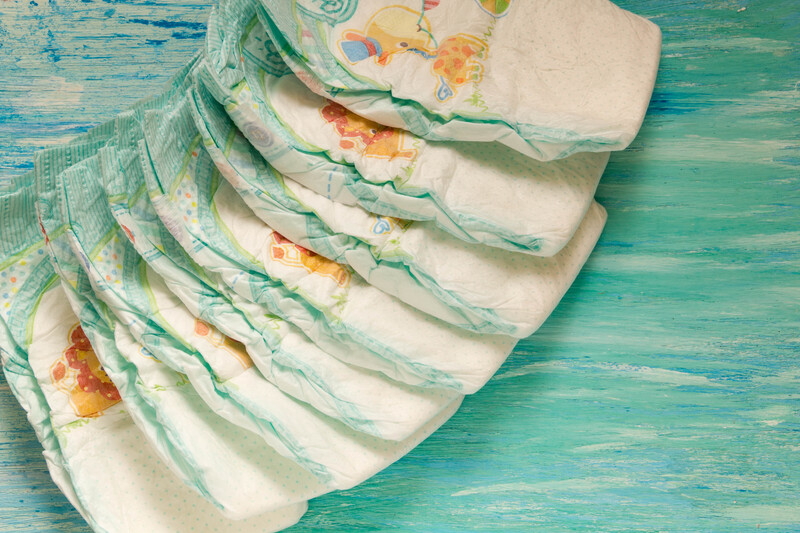Community Guidelines for PPE Waste Disposal
The rise in the use of Personal Protective Equipment (PPE) has played a crucial role in safeguarding public health, especially during health crises such as the COVID-19 pandemic. However, the increased usage of disposable PPE like masks, gloves, and gowns has presented new challenges related to PPE waste disposal. Proper disposal of PPE waste is essential not only for the safety of sanitation workers and the public but also for the preservation of our environment. In this comprehensive guide, we will walk you through the community guidelines for PPE waste management, ensuring the safety, health, and cleanliness of your surroundings.
Why Proper PPE Waste Disposal Is Important
- Health and Safety: Improper disposal can spread infection or disease to community members and waste workers.
- Environmental Protection: PPE made from plastics and synthetic fibers takes years to decompose and can harm wildlife if not disposed of properly.
- Community Cleanliness: Littered masks and gloves negatively impact neighborhood aesthetics and public perception.
- Legal Compliance: Many regions have implemented regulations concerning PPE waste disposal procedures.

Types of PPE Waste and Their Proper Disposal Methods
Most Common PPE Items
- Single-use masks (surgical masks, N95, KN95)
- Disposable gloves (latex, vinyl, nitrile)
- Face shields and goggles
- Protective gowns and coveralls
- Shoe covers and hair nets
Each category of PPE waste requires a particular method for safe and responsible disposal. Let's explore the best practices in detail.
1. Mask Disposal Guidelines
Single-use face masks are the most discarded PPE item globally. Here's how you should handle their disposal:- Remove the mask by the ear loops or ties--never the front.
- Place the mask in a dedicated, lined trash bin. If possible, use a bin with a lid.
- Avoid recycling disposable masks; they are not recyclable through general curbside programs.
- Wash or sanitize your hands after disposing of the mask.
- If you are sick, double-bag your mask before disposal to prevent contamination.
2. Glove Waste Disposal
Disposable gloves can harbor harmful contaminants. To ensure safe glove disposal:- Remove gloves without touching the exterior surface by peeling them inside-out.
- Discard used gloves immediately into a non-recyclable waste bin or a dedicated PPE bin.
- Do not litter; gloves can clog waterways and harm wildlife.
- Never flush gloves down toilets or sinks.
- Sanitize your hands thoroughly after glove removal.
3. Gown and Coverall PPE Waste
Gowns and coveralls are more likely used by healthcare and frontline workers. Here are the guidelines:
- Remove gowns and coveralls carefully, avoiding the outer surfaces which may be contaminated.
- Place items in sealed bags before sending to incineration if used in healthcare settings.
- For households, dispose of them in regular waste, but double-bag if possible.
- Do not attempt to recycle disposable gowns and coveralls.
4. Face Shields and Reusable PPE
- Reusable PPE, such as face shields and cloth masks, should be cleaned according to manufacturer instructions.
- If broken or damaged, consult local electronic and plastic recycling guidelines--some parts may be recyclable.
- Never place contaminated face shields in recycling unless decontaminated first.
Community-Wide Protocols for PPE Waste Management
Establishing community-wide protocols helps ensure best practices are followed by all residents, local businesses, and institutions. Here's how your community can efficiently manage PPE waste disposal:
1. Dedicated PPE Waste Bins
- Install clearly labeled bins for PPE waste in public spaces, businesses, schools, and healthcare centers.
- Bins should have secure lids to prevent spillage and animal interference.
- Empty bins regularly and disinfect their surfaces often.
- Place bins at entrances/exits for high-traffic locations such as parks and supermarkets.
2. Public Awareness Campaigns
- Launch awareness drives about proper PPE waste disposal guidelines through posters, flyers, and social media.
- Educate residents about health risks associated with improper PPE disposal.
- Display clear signage near PPE waste bins to encourage correct use.
- Distribute helpful guides on double-bagging and handling contaminated PPE at home.
3. School and Workplace Initiatives
- Set up PPE waste collection points at key facility locations.
- Conduct safety briefings for staff and students about responsible PPE handling.
- Arrange regular training sessions on community guidelines for PPE waste.
- Organize PPE waste audits to identify gaps in disposal practices and improve protocols.
Environmental Considerations and Innovative Solutions
The environmental impact of disposable PPE is a growing concern. Here are solutions and alternative approaches:
1. Reusable PPE Options
- Encourage the use of reusable cloth masks and washable gowns where feasible.
- Educate users on proper cleaning and maintenance to ensure effectiveness.
- Adopt reusable PPE in schools, offices, and low-risk areas.
2. PPE Recycling Initiatives
- Some specialized companies now accept disposable masks and gloves for recycling using advanced technologies.
- Check with local waste management providers or recycling centers if such options exist in your region.
- Implement separate PPE waste collection for future recycling streams.
3. Community Clean-Up Efforts
- Organize monthly PPE waste pick-up drives in parks, neighborhoods, and beaches.
- Engage local volunteers and provide them with appropriate gear for safety.
- Partner with environmental organizations to amplify impact and reach.
4. Innovation in PPE Design
- Support new PPE made from biodegradable or compostable materials.
- Encourage local businesses to stock and promote eco-friendly PPE alternatives.
- Advocate for research and policy on sustainable PPE production and disposal.
Best Practices for Households
Families play an essential role in minimizing PPE-related pollution. These tips can guide households toward responsible PPE waste management:
- Designate a closed bin for use exclusively for PPE waste at home.
- Double-bag items when someone in the household is ill or isolating.
- Never mix PPE waste with recyclables or compostables.
- Store bags securely until pick-up day to prevent animals from scattering waste.
- Sanitize hands after disposing of any PPE, and clean the bin regularly.
Responsibilities of Local Authorities and Waste Collectors
Municipalities and waste collection agencies are on the frontline of PPE waste management. Their responsibilities include:
- Providing safe and secure PPE waste bags or bins to households, businesses, and healthcare facilities.
- Regularly collecting PPE waste using designated vehicles and protective protocols.
- Training sanitation workers on safe PPE handling and disposal measures.
- Running regular public information campaigns about PPE disposal do's and don'ts.
- Partnering with environmental agencies to monitor and report improper PPE disposal hotspots.
Special Considerations: Healthcare and High-Risk Environments
In healthcare facilities and environments where infection risk is pronounced, strict PPE waste disposal protocols ensure safety and compliance.
Key guidelines in these settings:
- Use color-coded bins and bags to distinguish between general, infectious, and PPE waste.
- Seal PPE waste bags securely before disposal and label them appropriately.
- Store filled bags in designated collection areas for prompt and safe removal.
- Train all staff regularly on updates to PPE waste disposal regulations.
Penalties for Improper PPE Waste Disposal
Many regions have established fines and penalties for illegal dumping or improper handling of PPE waste to encourage responsible community behavior:
- Fines for littering masks, gloves, or gowns in public spaces can range from nominal amounts to hundreds of dollars.
- Repeated offenses may attract higher penalties or community service requirements.
- Businesses and institutions may be subject to more severe consequences for systemic non-compliance.
*Refer to your local waste management authority's guidelines for complete legal details.*

Frequently Asked Questions (FAQs) About PPE Waste Disposal
Can used PPE be recycled?
Generally, no. Most disposable PPE contains mixed materials or biological contaminants and is not suitable for standard recycling streams. Specialized recycling programs may exist in limited areas.
What should I do if there is no dedicated PPE waste bin nearby?
Always carry your used PPE home for safe disposal if a dedicated bin isn't available. Never litter or dispose of PPE in recycling bins.
Is burning PPE waste an acceptable option?
Burning PPE waste is not recommended in households due to harmful emissions. Incineration should be managed by specialized facilities with proper filtration systems.
How often should PPE waste bins be emptied?
Bins should be emptied daily or as soon as they are half full, especially in high-traffic public areas.
Conclusion: Building a Safer and Cleaner Community
Responsible PPE waste disposal is our collective duty. By following these community guidelines for PPE waste disposal, we protect our health, safeguard the environment, and foster a sense of social responsibility. Whether at home, in public spaces, or at our workplaces, adopting conscientious PPE waste management practices is a vital step toward a cleaner, safer future for all.
For more information on local PPE waste disposal regulations or to participate in community initiatives, contact your municipality's waste management department or visit their official website. Let's work together to make our community a role model in PPE waste management!
```